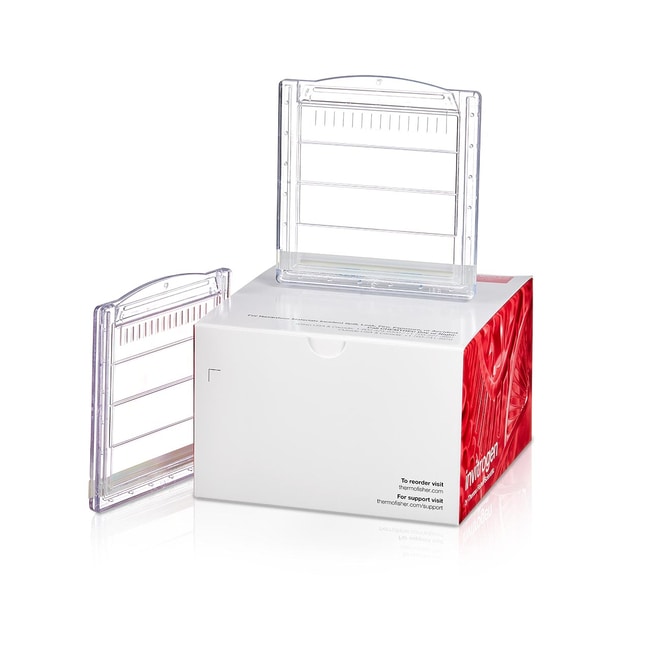Search Thermo Fisher Scientific

Novex™ Tricine Mini Protein Gels, 16%, 1.0 mm
| Catalog Number | Wells |
|---|---|
| EC66955BOX | 15-well |
| EC6695BOX | 10-well |
| EC66952BOX | 12-well |
Features of Novex Tricine protein gels:
• Increased resolution of proteins with molecular weights as low as 2 kDa
• Improved compatibility with direct sequencing of proteins after transferring to PVDF
• Minimized protein modification due to the lower pH of the tricine buffering system
Formulation
Invitrogen Tricine gels are made with high-purity, strictly quality-controlled reagents: Tris base, HCl, acrylamide, bisacrylamide, TEMED, APS, and highly purified water. Our Tricine gels have a 4% stacking gel and do not contain SDS. The Tricine system requires SDS in sample and running buffers for best results.
Choose the right Tricine gel for your protein separation
Invitrogen Tricine gels come in three polyacrylamide concentrations of 10%, 16%, and a gradient of 10–20%. Select from our many well formats, including 10-, 12-, and 15-well. Tricine gels are formulated for denaturing gel electrophoresis applications. For optimal sample preparation, we recommend Tricine SDS Sample Buffer (LC1676) and optimal separation use Tricine SDS Running Buffer (LC1675).
For transfer of proteins to a membrane, we recommend using the Novex Tris-Glycine Transfer Buffer (LC3675) if performing a traditional wet transfer using the XCell II Blot Module (EI9051) or the Mini Blot Module (B1000). Rapid semi-dry transfer can be performed using the Invitrogen Power Blotter or rapid dry transfer using the iBlot 2 Gel Transfer Device (IB21001).
Introducing iBlot 3 Western Blot Transfer System
Featuring higher throughput and built-in cooling for consistent protein transfer
Learn more ›

Learn more
About our Tricine gels ›
Related Western Workflow Products
Tricine SDS Sample Buffer ›
Tricine SDS Running Buffer ›
NuPAGE Antioxidant ›
Spectra Multicolor Low Range Protein Ladder ›
SimplyBlue SafeStain ›
Novex Tris-Glycine Transfer Buffer ›
Protein Gel Resupply Packs
Restock on reagents for running 100 protein gels and save! ›
